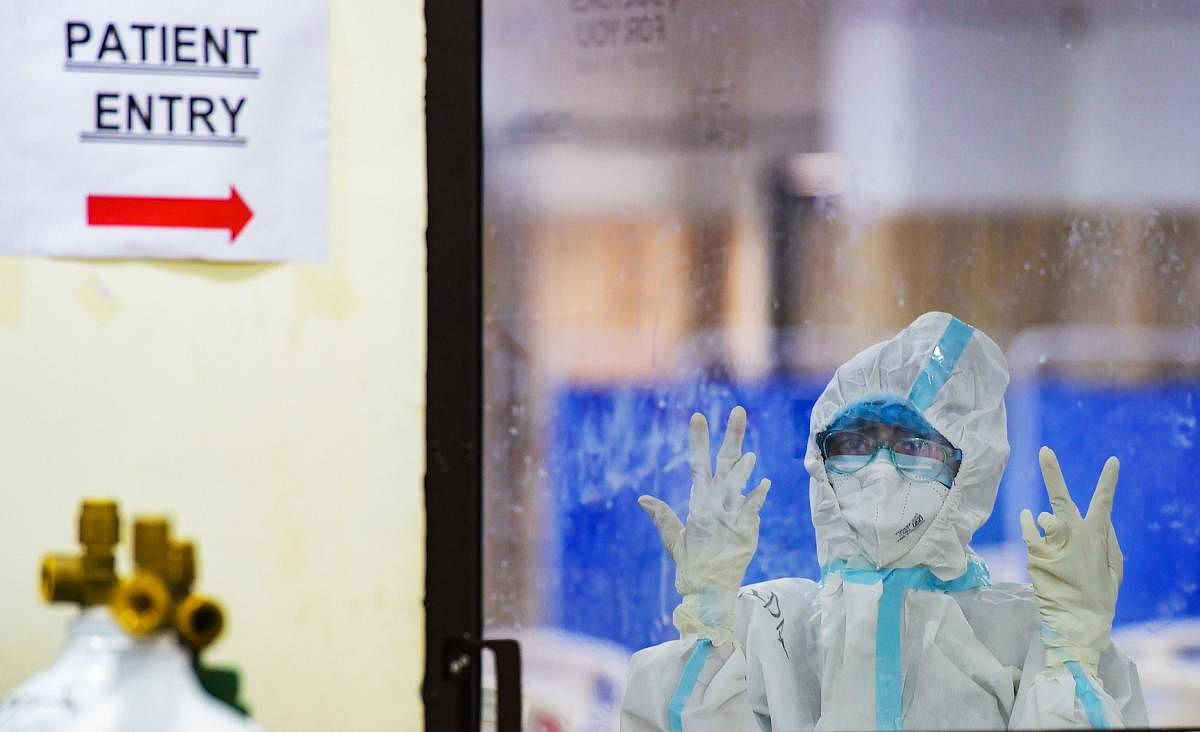
B.1.617, a variant of the novel coronavirus first found in India in October last year, has been classified as a "variant of concern" by the World Health Organisation (WHO). A variant of concern is considered more troublesome because it spreads faster and has a higher ability to evade the body's natural defence. B.1.617 is reportedly behind the surge in coronavirus infections in many parts of India, and has been detected in at least 44 countries as of May 11. Here's what we know about it so far:
What makes B1.617 different?
B1.617 underwent genetic changes or mutations through the natural process of evolution. This lineage is defined by 15 genetic mutations, including six such changes in the spike protein of the virus. One of these mutations, E484Q, is involved in immune escape, while the other, L452R, is involved in increased infectivity. The resurgence in Covid-19 cases and deaths in India has raised questions on the potential role of B.1.617 and other variants (e.g. B1.1.7 or the UK variant) in circulation. The WHO says B1.617 appears to have higher rates of transmission, including observed rapid increases in prevalence in multiple countries.
What is the evidence that B1.617 is behind India’s second wave?
Indian scientists analysing the genome sequences of SARS-CoV-2 in the country had flagged B1.617's role behind the surge at least in parts of Maharashtra since March. But the health ministry recognised it as a “variant of concern” only in the first week of May. The WHO report says a recent risk assessment of the situation has found that resurgence and acceleration of Covid-19 transmission in India had several potential contributing factors, including an increase in the proportion of cases of SARS-CoV-2 variants with potentially increased transmissibility, besides several religious and political mass gathering events which increased social-mixing. The exact contributions of each of these factors on increased transmission in India are not well understood.
Also read: Covid-19 crisis: Govt use of country-specific variant names betrays 'Indian variant' outrage
Are there any sub-categories of B1.617? What’s known about them?
There are three sub-lineages of B1.617, namely B1.617.1, B1.617.2 and B1.617.3. The first two have been reported from 34 and 31 countries, respectively, while B1.617.3 has been found in four nations. B1.617.2 does not carry the mutation known as E484Q but it contains the T478K gene which is not found in the other two variants. It is the variant that is spreading fast in the UK. All the three sub-lineages carry two other mutations named P681R and D6146. The clinical significance of these genetic changes is yet to be fully understood. The WHO has underlined the need for more targeted sequencing and epidemiological studies to gain a deeper understanding of the clinical significance of these sub-lineages.
Will the existing drugs, diagnostics and vaccines work on B1.617?
A WHO official says that although B.1.617 has been classified as a “variant of concern” at the global level, there is no evidence to suggest that the existing vaccines and diagnostics would not work against it. Preliminary evidence, however, suggests potential reduced effectiveness of Bamlanivimab, a monoclonal antibody used for Covid-19 treatment, and potentially slightly reduced susceptibility to neutralisation antibodies.
